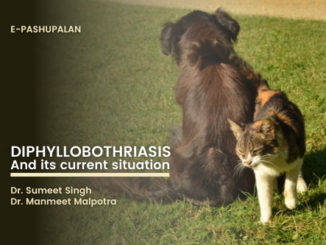Retention of fetal membrane or retention of placenta or retention of cleansing is defined as failure to expel fetal membranes within 24 hours of parturition. Retained placenta is a condition in which all or a part of the placenta or membranes remain in the uterus during the third stage of labour. Incidence is more in dairy cattle compared to beef cattle. ROP occurs due to failure of detachment of fetal part of placenta from maternal part. Most of cows will expel placenta within 6 hours of parturition, usually placenta will expel within 3-8 hours of parturition. Incidence is about 10-15%. ROP has economically importance due to fall in milk yield, post partum anoestrus and conception and endometritis. Incidence is high in dystokia, induced parturition, and C- section compared to eutokia. In ROP morbidity 50-55% and mortality will be 2%. Incidence more in high yielding animals. Primary cause is to failure of detachment from maternal side. Secondary cause is due to failure of expulsion of detached placenta from maternal side.
Causes
Dystokia, abortions with non-infectious cause and abortions due to infectious diseases like Brucellosis, Vibriosis, Tuberculosis and mycotic infections, premature birth, caesarian section operation, torsion of uterus, still birth, placentitis, twin birth, male calf birth, deficiency of fat soluble vitamins, advanced age of animal, deficiency of calcium, phosphorus and magnesium. Vitamin E and Selenium deficiency, milk fever, allergy, hypoglycemia, edema of chorionic villi, atony of uterus, infection of uterus in pregnancy, early calving. Malnutrition, debility, stress, travelling of animal in late gestation, high environmental temperature, hormonal imbalance, disturbance in mineral metabolism, low plane of nutrition, poor management of herd, endocrine disorder and infection of uterus after parturition.
Symptoms
Hanging of discolored and degenerating placenta from vulva with foul smelling discharges from uterus. Signs of secondary infections like pyrexia, dullness, depressed, anorexia and fall in milk yield. In some animals with placenta retained in uterus leads to foul smelled discharge from vagina after few days of parturition. Animal with ROP are more prone for mastitis. Severe economical losses occurs in untreated cases in terms of both production and reproduction.

Complications
Untreated or unattended ROP may leads to metritis, post partum haemorrhage. septicemia, mastitis, abomasal displacement and toxemia. Other complications includes fall in milk yield, delayed uterine involution, long post partum anoestrus period, late conception, abortion in next pregnancy and fall in milk yield. In Severe toxemic cases may end in death. Untreated cases will often complicated to peritonitis, mastitis, metritis, secondary ketosis, followed by death due to toxaemia.
Diagnosis
Based on history of parturition having period of more than 24 hours with presence of hanging of placenta in vulva with discolored and degenerated. Foul smelling discharges from vagina. By per rectal and per vaginal examination.
Treatment
Untreated animals will expel placenta from uterus in 2-11 days. Manual removal of placenta is not recommended due to complications like uterine tear, uterine bleeding and chance of getting potential secondary infection. Cutting of portion of hanging portion of uterus is advised under aseptic condition. Intrauterine and systemic therapy will be advised in complicated cases. Fluid therapy and symptomatic treatment given in late presented cases. Culture antibiotic sensitivity test followed in non responding pyometra cases as a sequlae of ROP. Untreated cases may complicated to endometritis and repeat breeders. Hormonal therapy. Calcium borogluconate adviced in non pyrectic cases with uterine atony. Homeopathic treatment will also effective in RPO. Close monitoring and early treatment will makes animal early recovery.
Control
Good dry cow therapy, hygiene good managemental practices in the cattle shed, high plane of nutrition. Avoid any type of stress to pregnant animals. Culling of animals with repeated history of ROP. Regular exercise and nutritional care. Aged animals should be given more care. Avoid fattening of cows. Provide sufficient vitamins and minerals supplementation in pregnancy period. Bio-security measures should be followed in the farm. Avoid unnecessary handling of animals during parturition. Proper disposal of placenta and aborted fetus in the cattle shed is important to avoid the spread of infections in the herd. Animals with habitual abortion should be culled. Animal with history of higher incidence of ROP should be culled. Artificial insemination is better practice to avoid the infectious diseases related to reproductive system transmission. Periodic screening should be done in female animals to control the infections of uterus. Calving shed should be clean n hygiene to avoid the infection to both dam and calf.
References
- Retained placenta: Causes and treatment by Charles Guard.
- MSD Veterinary Manual: ROP
- Farm health online.com: Retained placenta in cattle
- Wikipedia
- Retained placenta and how to treat them by Heather Smith Thomas
- Retained placenta: The cattle site.
|
The content of the articles are accurate and true to the best of the author’s knowledge. It is not meant to substitute for diagnosis, prognosis, treatment, prescription, or formal and individualized advice from a veterinary medical professional. Animals exhibiting signs and symptoms of distress should be seen by a veterinarian immediately. |






Very nicely explained…
good article
Nice article
Very nice
Nice article